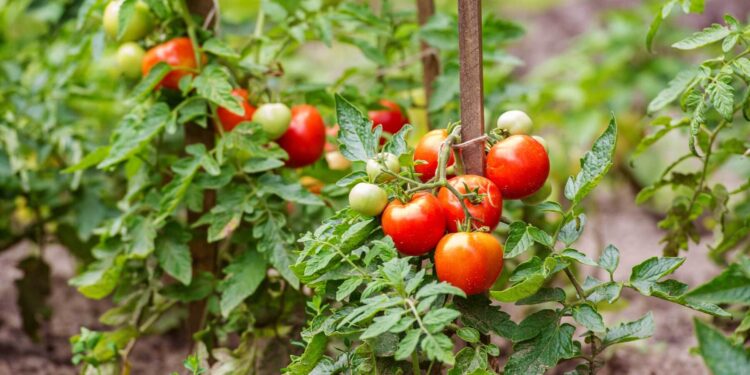Cherry tomatoes grow well in containers. Water them regularly to keep the soil moist, especially on hot days.
Choose determinate tomato plants that stop growing at a certain height. This is ideal for small garden spaces or window-sill gardens.
Apply a slow-release organic fertilizer upon planting and again during the fruiting cycle. This promotes healthy plant growth and helps prevent blossom end rot.
Hanging Baskets
Tomato plants take up a lot of space in the garden but their cascades of juicy fruit can be a beautiful addition to hanging baskets. They’re also easy to reach from inside the house when you crave a bite.
Baskets are especially convenient for cherry tomatoes because of their small size. Some, like the Green Bee variety, produce fruits about a quarter of an inch in diameter. Others, like the Baby Boomer variety, can yield more than 300 red one-ounce tomatoes each season.
To ensure a successful crop start tomato seeds indoors in late March and transfer outside after the fear of frost has passed. Plant in a high quality potting soil that’s rich with organic matter and has the added benefit of improved water retention. You’ll want to add a natural or organic root and bloom fertilizer at the time of planting as well. Water the plants daily or more when temperatures get hotter to keep them well-hydrated.
Cages
The classic way to support cherry tomatoes, cages are easy and relatively low maintenance. They are also a good solution for indeterminate varieties, which need to be staked up and which will fruit over a long period of time rather than ripening at one point and then stopping.
Cages are available as stand-alone models or in a snap-together cage that can be formed to fit the plant, making it a good choice for gardeners who want to keep their tomatoes close at hand. They can be used in the ground, against a wall or on a trellis.
For best results, water tomato plants in the morning and daily. Avoid watering at other times, since doing so can flush nutrients from the soil and make the tomatoes more susceptible to diseases and insects. Use a drip irrigation system and ensure that 6 to 8 inches of soil are moistened each time you water. Use a liquid 20-20-20 fertilizer to promote good growth and strong fruit production.
Containers
Many home gardeners grow cherry tomatoes in containers. Containers keep plants weed-free and close to the house, which makes them easier to tend to and protect from disease. They also make it easy to control soil temperature and nutrient levels.
The key for successful container cherry tomato growing is to choose a deep, large pot that is not too shallow. Then, fill it with a good quality potting mix. Use a general vegetable potting mix or one that is high in organic matter (e.g., compost, manure, worm castings).
Cherry tomatoes need lots of sunlight to produce and set fruit. Place the container in full sun where it can get about 8 hours of direct sun daily. Keep the plants well watered, but avoid letting the soil become saturated. Too much moisture can make the plant prone to fungal diseases. Keep the humidity level around 40-70%, and give it a weekly drench with a water-soluble fertilizer that is high in potassium to promote flowering and fruiting.
Sunlight
Tomato plants need a lot of sunlight to thrive. They can suffer from problems like fruit cracks and blossom end rot when conditions are not optimal. These problems can be remedied with proper garden soil preparation and fertilization.
Tomatoes also need a lot of water to grow well. Using a soaker hose or drip system keeps the tomatoes from getting overwatered. This also saves water and helps reduce the risk of fungal disease problems, such as blight.
Vining tomato varieties need a trellis to support them. This allows them to ramble and creates an attractive focal point in the garden. It also helps prevent sunscald, which is when a tomato’s skin is exposed to direct, scorching sunlight for too long.
Companion planting is another great way to keep your cherry tomato plants healthy and productive. Planting with basil, nasturtiums, cucumbers, pole beans and sage promotes healthier plants and boosts the flavor of the tomatoes. Tomatoes are also susceptible to a number of pests, including fruit worms, hornworms and stinkbugs. Keeping the plants weed-free, adequately watered and in good light prevents infestations.









































